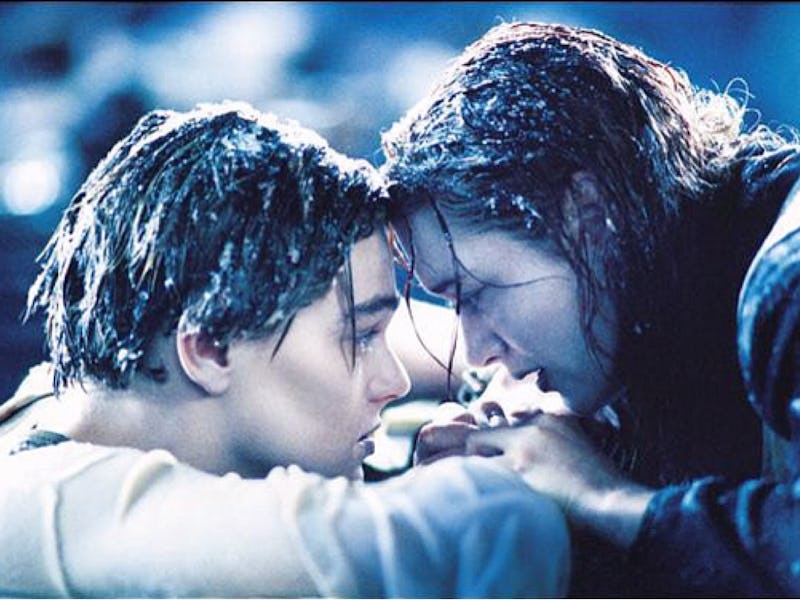We’re less than a month away from the 20th anniversary of the release of Titanic, an event that’s stirring up fond memories of the golden nineties. For some, it may be a reminder of the time they first learned about the real-life tragedy, and for others, it may spark recollection of the first time they saw boobs. But for many, it’s an excuse to rehash the question: Did Jack Dawson really have to die?
In the two decades since the film was released, science-minded Jack fans have argued that he died in vain, but director James Cameron recently attempted to shut down those theories once and for all.
A recap: Before Cameron decided the world needed five Avatar movies, he killed off Leonardo DiCaprio, right as his hot teen angel look peaked. At the end of the film, Rose, played by Kate Winslet, uses a door as a life raft in the frigid sea as the Titanic sinks. DiCaprio’s Jack bobs along, holding onto the door. Eventually, he can’t take it anymore, tells Rose “never let go,” lets go, and leaves the audience with this:
Bye Jack.
Cameron, who has repeatedly argued that Jack could not have lived (even though Winslet has said he “could have fit on that door!”), was forced to revisit the issue again in a recent interview with Vanity Fair. Jack had to die, says Cameron, because that’s the way he wrote the movie.
“It’s called art, things happen for artistic reasons, not for physics reasons,” said Cameron, who finds the discussion of a beloved character’s death 20 years later “all kinds of silly.” Vanity Fair pressed on, because we all know Cameron has a hard-on for science:
Well, you’re usually such a stickler for physics. . .
I am. I was in the water with the piece of wood putting people on it for about two days getting it exactly buoyant enough so that it would support one person with full free-board, meaning that she wasn’t immersed at all in the 28 degree water so that she could survive the three hours it took until the rescue ship got there. [Jack] didn’t know that she was gonna get picked up by a lifeboat an hour later; he was dead anyway. And we very, very finely tuned it to be exactly what you see in the movie because I believed at the time, and still do, that that’s what it would have taken for one person to survive.
James in the water with Leo and Kate.
While Cameron stresses that the buoyancy and size of the door means only Rose could fit, others have disagreed. During a 2012 episode of Mythbusters, the hosts argued that if Rose had tied her jacket to the bottom of the door, the added buoyancy would have saved both her and her frozen beau. Cameron addressed this argument in an interview with The Daily Beast, pointing out that if Rose jumped into the water to attach her vest, the 28-degree water would have issued her a death sentence via hypothermia.
“They’re fun guys and I loved doing that show with them, but they’re full of shit,” says Cameron.
Some physicist bloggers back up Cameron’s claim. On Physics Central, the blog of the American Physical Society, a blogger mathlete points out that, for an object to float, its buoyancy force (the force keeping it afloat) has to be greater than the force of gravity pulling down the object. In the case of Rose’s heavy oak door, the density of the salt water and the pull of gravity means that it would require a buoyancy force of 2,490 N to float. Unfortunately for Jack and Rose, their combined weight — even if they both fit on the door — would outweigh the buoyant force necessary to keep the door floating.
For Jack to live, they would have needed a bigger door — or at least one made of a more buoyant material, like pine. It looks like we need to let go.
I'm not crying you're crying.
